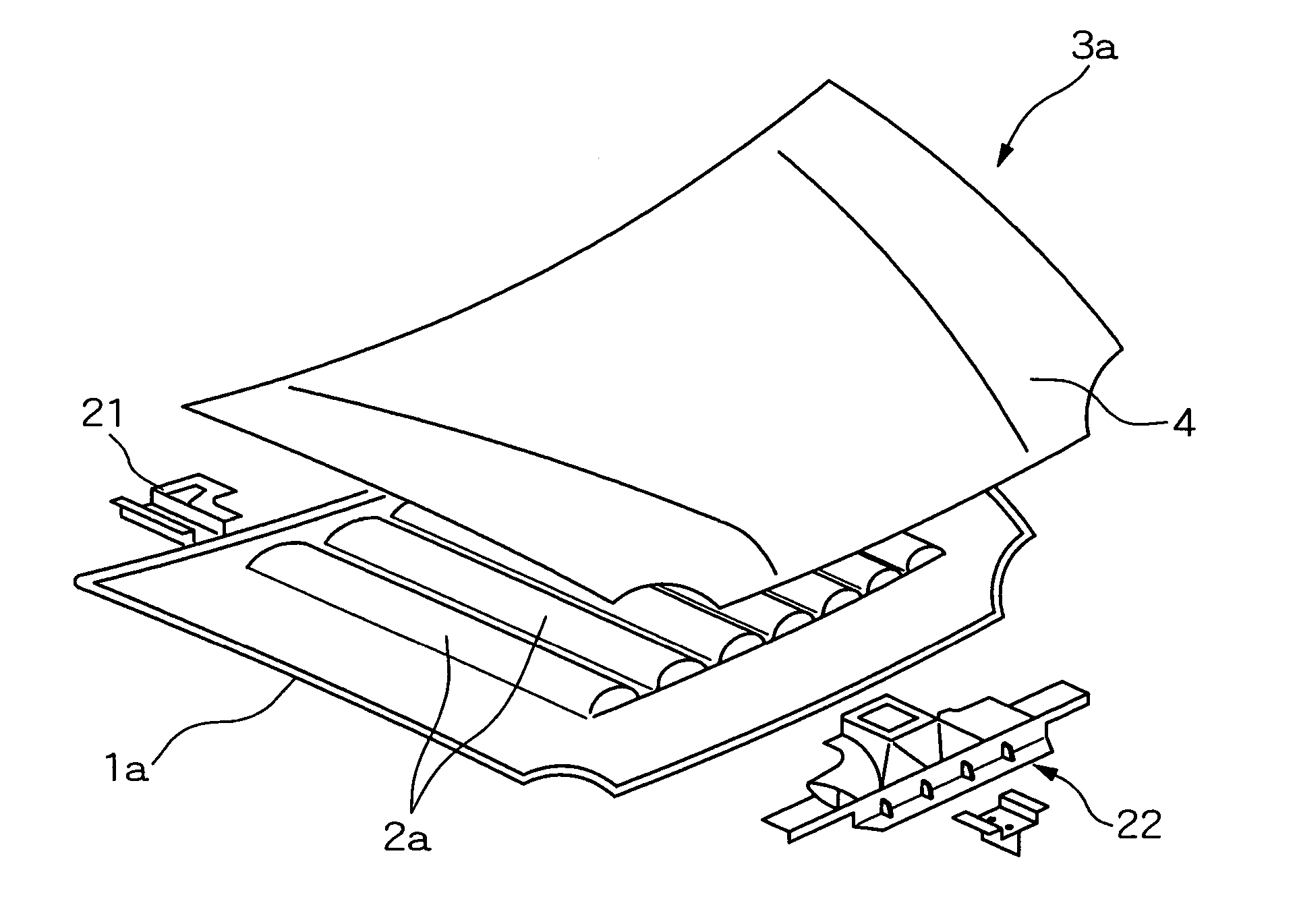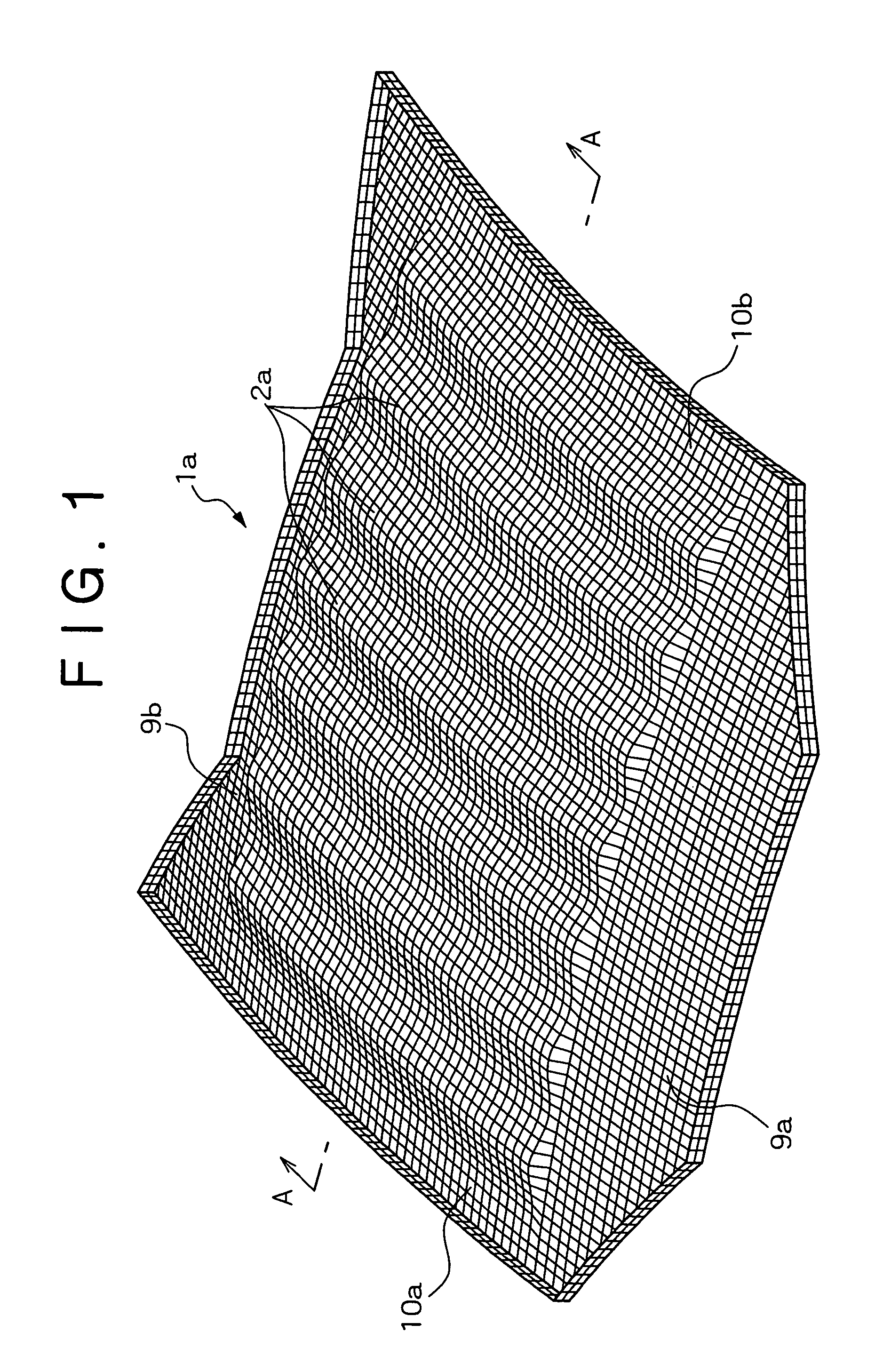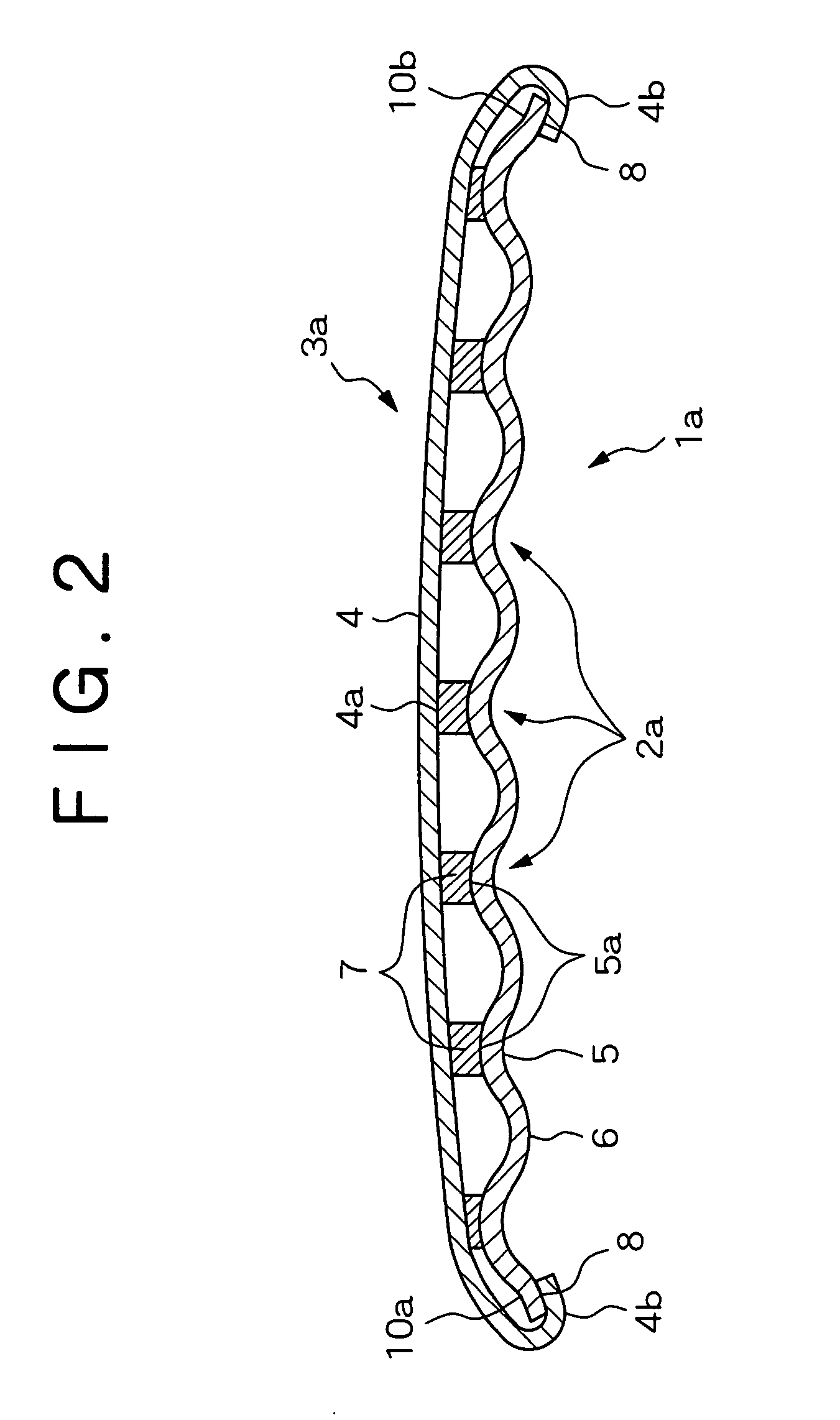Panel structure for car body hood
a panel structure and car body technology, applied in the direction of roofs, pedestrian/occupant safety arrangements, vehicular safety arrangements, etc., can solve the problems of increasing tension rigidity, cone-type hood structure does not necessarily provide the required tension rigidity, and conventional cone-type and beam-type inners cannot meet the demand for increased rigidity, etc., to improve the head impact resistance, improve the impact resistance, and improve the effect of hood structur
- Summary
- Abstract
- Description
- Claims
- Application Information
AI Technical Summary
Benefits of technology
Problems solved by technology
Method used
Image
Examples
example 1
(1) EXAMPLE 1
Comparison between the Beam-Type Hood Structure and the Corrugated Hood Structure
[0185]FIG. 22 shows analysis results of head impacts on the beam-type hood structure and the corrugated hood structure. The adult head model is used. There is 84 mm clearance L between the outer and the rigid object surface along the impact direction. An impact position is set to the center of the hood as shown in FIGS. 18 and 19. From FIG. 22, we can find the following. The beam-type hood structure yields the HIC value of 2059. The corrugated hood structure greatly decreases the second acceleration wave. As a result, the HIC value greatly decreases to 940. The sine shape of the corrugated inner is suitable for absorbing an impact during the head impact. The head impact causes a backlash vibration between the outer and the inner to disturb the head acceleration waveform. This decreases the peak value and greatly decreases the HIC value.
example 2
(2) EXAMPLE 2
Bonding the Corrugated Inner to the Outer
[0186]As analysis models, the outer and the inner are modeled to leave a 4 mm gap at the bonding section. Actually, the bonding section needs to be minimized to provide an optimal tension rigidity for the hood. After examinations, we confirmed the following. In order not to hinder a backlash vibration, the contact cross-sectional shape preferably has a relatively limited area. As shown in FIG. 21, it is preferable to arrange the bonding sections on tops of the corrugated inner in a cross-stitched or distributed manner using very soft, spongy adhesive. We also confirmed the following tendency. When the cross sectional area of the bonding section or the adhesive rigidity increases, the outer and the inner are integrated to be vibrated easily, thus eliminating a backlash vibration. As a result, the second acceleration wave increases to increase the HIC value.
example 3
(3) EXAMPLE 3
Preferred Ranges of Corrugation Length p and Corrugation Height h
[0187]We investigated an effect of the corrugation length and the corrugation height of the corrugated inner on HIC values. The outer plate thickness is set to 1 mm. The inner plate thickness is set to 0.8 mm. With respect to analysis results of the child head impact, FIG. 23 shows an effect of the corrugation length on HIC values. FIG. 24 shows an effect of the corrugation height on HIC values. According to FIG. 23, we can formulate a preferable range of corrugation length p effective for decreasing the HIC value as follows using outside head diameter d.
0.7p / d<1.7
[0188]According to FIG. 24, we can formulate a preferable range of corrugation height h as follows also using outside head diameter d.
0.15h / d<0.4
[0189]If the corrugation length p is smaller than this range, the bending rigidity of the corrugated inner increases along the longer direction of the hood. On the contrary, the bending rigidity de...
PUM
| Property | Measurement | Unit |
|---|---|---|
| time | aaaaa | aaaaa |
| speed | aaaaa | aaaaa |
| impact angle | aaaaa | aaaaa |
Abstract
Description
Claims
Application Information
 Login to View More
Login to View More - R&D
- Intellectual Property
- Life Sciences
- Materials
- Tech Scout
- Unparalleled Data Quality
- Higher Quality Content
- 60% Fewer Hallucinations
Browse by: Latest US Patents, China's latest patents, Technical Efficacy Thesaurus, Application Domain, Technology Topic, Popular Technical Reports.
© 2025 PatSnap. All rights reserved.Legal|Privacy policy|Modern Slavery Act Transparency Statement|Sitemap|About US| Contact US: help@patsnap.com



